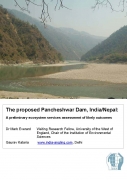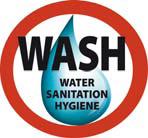/topics/society-culture-religion-and-history
Society, Culture, Religion and History
Second press release from Water Initiatives Orissa on the myth of Surplus Water in Orissa
Posted on 11 Aug, 2010 01:46 PM
- WIO demands the Government of Orissa to come out with a White Paper on water first and then decide on new allocations.
- No new industries should be allowed to draw water unless this White Paper prepared and made public.
- That Orissa is a ‘Surplus Water’ state is a ‘myth’.
National Hydroelectric Power Corporation: People don't matter - A dossier by Urgewald
Posted on 11 Aug, 2010 01:24 PMThis document by Urgewald provides a brief overview on the role of India's premier dam building agency, the National Hydroelectric Power Corporation (NHPC) in the construction of dams in India and is highly critical of the mode in which the NHPC has been aggressively expanding its operations of building dams across rivers in the country.
It aims to inform the public, investors and financiers about NHPC’s track record and expansion plans and presents compiled information from three regions where NHPC has been actively involved in the construction of dams namely:
- Narmada Valley in Central India
- Sikkim and Arunachal Pradesh in Northeastern India
- The lands of the Kuki people in Northwestern Burma, where NHPC is building a dam for the military junta.
A turning point in water saving technologies in north Gujarat’s groundwater socio-ecology – a report by Carewater INREM foundation
Posted on 08 Aug, 2010 10:13 PM The study analyses the changes in farming system and socio-economic impacts at the household level through “before-and-after” (longitudinal) comparison of adopters an
The study analyses the changes in farming system and socio-economic impacts at the household level through “before-and-after” (longitudinal) comparison of adopters an
Floods, drinking water contamination, mining and waterbodies, water bills, water conflicts - News roundup (1-7 August 2010)
Posted on 07 Aug, 2010 04:51 PMFloods: lessons to be learnt from the massive flooding in Surat city
A report by IIM criticises the way in which dams are managed in the country and calls for the need to apply Management Science / Operations Research techniques and information technology to improve dam management and prevention of floods
Fluorosis in Gujarat: A disaster ahead – A report by CAREWATER
Posted on 07 Aug, 2010 08:53 AMState of MGNREGS in Bundelkhand - A report by Centre for Environment and Food Security (2010)
Posted on 06 Aug, 2010 11:05 PMThis report describes the findings of a rapid survey conducted by Centre for Environment and Food Security (CEFS) to evaluate the performance of the Mahatma Gandhi National Rural Employment Guarantee Scheme (MGNREGS) in the 50 poorest dalit villages of Bundelkhand region of Uttar Pradesh. The rapid survey was conducted in the districts of Chitrakoot, Banda, Mahoba, Jhansi and Lalitpur.
Duel among duals - Popular science of basaltic hydrogeology in a village of Saurashtra - A paper by CAREWATER
Posted on 03 Aug, 2010 07:57 PM The report by Carewater INREM Foundation deals with the duel between popular science used in decision making by farmers and the formal science of hydrogeology that is based on scientific data collection. These two parallel streams of knowledge exist together, sometimes complement, and at other times are at conflict. People’s knowledge on hydrology is not ‘dying’, but thriving and growing well, refreshed continually by interfaces with science. In hard rock areas, the high hydrogeologic variability makes observation as important as theory since it is localized, pervasive and relevant to the needs of people.
The report by Carewater INREM Foundation deals with the duel between popular science used in decision making by farmers and the formal science of hydrogeology that is based on scientific data collection. These two parallel streams of knowledge exist together, sometimes complement, and at other times are at conflict. People’s knowledge on hydrology is not ‘dying’, but thriving and growing well, refreshed continually by interfaces with science. In hard rock areas, the high hydrogeologic variability makes observation as important as theory since it is localized, pervasive and relevant to the needs of people.
UN affirms the right to safe and clean drinking water
Posted on 02 Aug, 2010 02:56 PMA remarkable piece of water history should have been headline news everywhere this week.
India WASH forum e-newsletter - Update 13 July 2010
Posted on 02 Aug, 2010 11:56 AMWe see this newsletter as a platform for independent credible voice in the water and sanitation sector. Our emphasis is on bringing together critical news and information with analysis. In this issue we share news and analysis on topical issues and developments.
The Department of Drinking Water and Sanitation(DDWS) has simultaneously invited inputs to Discussion Papers on Drinking Water and Sanitation, circulated on Solution Exchange. Inputs given by India WASH Forum, on this, is enclosed in this Update. We have pointed out the missing elements of sanitation improvement strategy that include, criticality of providing water as an inseparable component to household sanitation, the tendency to see behavior change as a lifestyle issue and not linked to the hardware components, peoples livelihoods and living conditions. Suggestions for what needs to be done to strengthen the implementation mechanism of the flagship sanitation programme(TSC) and partnerships.
A preliminary ecosystem services assessment of likely outcomes of the proposed Pancheshwar dam in India/Nepal - An IES report (2010)
Posted on 02 Aug, 2010 02:24 AM This report by the IES presents the findings of a study that explores the likely impacts of the recent proposals in India to build a dam at Pancheshwar in the Himalayas on the river ecosystems and the surrounding areas and people involved. This dam will be the world's second tallest structure intended to harness hydroelectric power and water by controlling the flow of the Kali river and its tributaries.
This report by the IES presents the findings of a study that explores the likely impacts of the recent proposals in India to build a dam at Pancheshwar in the Himalayas on the river ecosystems and the surrounding areas and people involved. This dam will be the world's second tallest structure intended to harness hydroelectric power and water by controlling the flow of the Kali river and its tributaries.
The document argues that although there are many benefits of the dam in terms of energy and water, the wider ramifications of the dam and its consequences for the people staying around the area have not been thought about in the planning process. The planning process has not engaged local people in the decision-making process, there is paucity of published information and the environmental and social consequences have been considered belatedly in the planning process.






